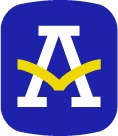We’re already more than one decade into the 21st century, but the American workforce is not. “Other countries manage to equip a much larger fraction of their young people with occupationally relevant skills and credentials,” notes a February 2011 Harvard study subtitled, “Meeting the Challenge of Preparing Young Americans for the 21st Century.”
At a time when close to half the students attending four-year colleges fail to graduate within six years, the report says that a “skills gap” prevents many young adults from becoming “economically self-sufficient.” The report argues that the majority of young people learn best when work and study are combined, and students apply their lessons to actual situations. Apprenticeship programs — like clinical practice for medical professionals — are cited as more successful learning models than full-time classrooms.
 Enter recent trends in career and technical educational programs available to high school students throughout the Delaware Valley.
Enter recent trends in career and technical educational programs available to high school students throughout the Delaware Valley.
A Transformation
“We’re not your father’s vo-tech school anymore,” said Dolores Szymanski, EdD, superintendent of the Burlington County (NJ) Institute of Technology (BCIT), a public vocational and technical school district serving about 2,600 high school students.
Increasingly, the old vo-tech schools are morphing into “career academies,” according to Steve DeWitt at the Association for Career and Technical Education in Alexandria, Virginia.
Eight out of ten “jobs of the future” listed by the Bureau of Labor Statistics require training provided by career/technical education, says DeWitt. The bulk of high-demand science, technology, engineering and mathematics (STEM) jobs require middle-level workers — for instance, the technicians who keep wind energy sites running, he says.
21st Century Realities
DeWitt, Szymanski and other technical high school educators point to these new realities of career and technical education (CTE).
► CTE is not a funnel for “lower track” students. Students selecting CTE are as diverse as the population, increasingly mirroring the workforce. Some students take AP and honors courses; some need tutoring.
► CTE is demanding and rigorous. Many career/tech texts have college-level difficulty, according to Kathy Demarest, a spokesperson for the New Castle County (DE) Vocational Technical School District. Certification and professional licensing exams require intensive study as well as class hours and practice.
► CTE students receive college preparation. Career/tech schools typically have “articulation agreements” and dual enrollment programs with area universities and colleges, noted Amy Shields, organizational advancement director for the Eastern Center for Arts & Technology in Willow Grove, PA. These programs give students a head start by providing college credit, cost savings and earlier career entry.
► CTE students have considerable college options. For example, a female BCIT major in auto mechanics is now studying medicine at Johns Hopkins. Cosmetology majors have put themselves through business school and buy the shops where they work. “Many parents don’t realize that CTE offers options for students to pursue both college and careers,” says Marie Barry, the New Jersey Dept. of Education’s director of career and technical education. “CTE is foundational training for multiple options.”
► CTE students benefit financially. Earnings of CTE graduates and certificate holders frequently help finance post-secondary degrees, allowing students increased mobility and advancement within their fields, and sometimes giving them an edge in a changing career world. More than one fourth of adults with certificates and post-secondary licenses “earn more than the average bachelor’s degree recipient,” according to the Harvard study.
 ► CTE preparation doesn’t pigeonhole students. CTE students have strong attendance rates and are engaged in their learning. In addition to workplace expectations, resume/portfolio-building and interviewing, they learn “soft skills” that serve them well, whether in college or the working world. Soft skills also include problem-solving, teamwork and research.
► CTE preparation doesn’t pigeonhole students. CTE students have strong attendance rates and are engaged in their learning. In addition to workplace expectations, resume/portfolio-building and interviewing, they learn “soft skills” that serve them well, whether in college or the working world. Soft skills also include problem-solving, teamwork and research.
Today’s economic and educational trends suggest that CTE is an important direction in secondary and post-secondary education.
Ann L. Rappoport, PhD, is an educational consultant and contributing writer to MetroKids.






